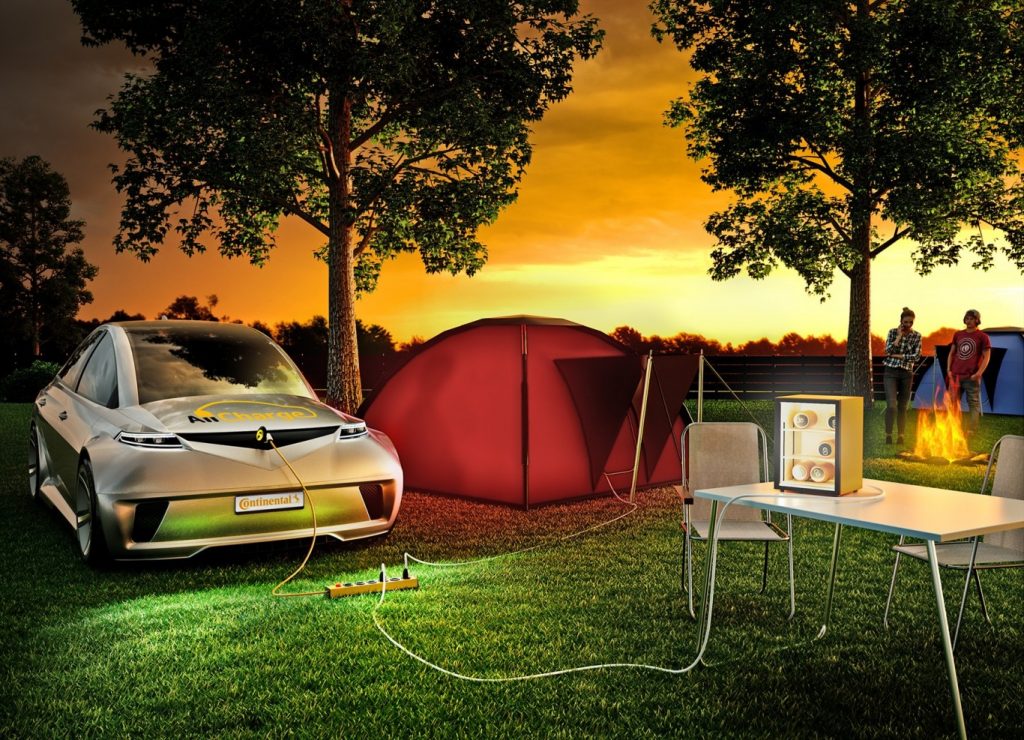Bearing in mind how important charging technology is for electric vehicle users in terms of stress-free everyday operation, Continental is now presenting innovations for this aspect of electric mobility too.
The all-new AllCharge system, which is easy for automakers to integrate, turns the vehicle’s electric powertrain into a universal ‘charging system’. Drivers can then charge their vehicle at any type of cable-based charging station, and can always use the station’s maximum output rate. At urban AC charging stations in particular, this can cut the required charging time by a factor of 12.
In addition, the bidirectional AllCharge system’s feedback capability will open up whole new applications for the electricity stored in the vehicle battery. For example, this energy can then be used as a mobile power supply for electrical or electronic devices, such as a laptop, an electric drill or a refrigerator.
Using a new prototype, Continental will also be showcasing the wireless (inductive) charging of electric vehicles for the first time. With the Continental system, EVs can be comfortably and conveniently charged at rates of up to 11 kW.
The system also guides the driver to the ideal charging position with great precision. Thus, inductive charging involves not only the electronics tasked with the charging and safety of the vehicle, but also the provision of additional information for the driver.
Innovative solutions meet the special requirements of vehicle electrification
Electrification brings both benefits and also new challenges. For example, although long engine shutdown phases in a hybrid vehicle save fuel, they also cause the engine to cool down.
A key role in the overall energy management strategy thus falls to the electrically heated catalyst (EMICAT) from Continental, which ensures that NOx reduction nevertheless operates at full efficiency the moment the engine is switched back on.
Electric vehicles have special requirements in terms of their brake systems too. Intensive use of braking energy recuperation (whereby braking energy is used to generate electricity) results in much less frequent use of the wheel brakes.
With this in mind, Continental is showcasing a new weight-reduced wheel and brake design in the form of the New Wheel Concept. A corrosion-free aluminium brake disc and specially adapted brake components prevent any risk of impaired brake performance due to corrosion.
Ideally, the New Wheel Concept can be combined with Continental’s PremiumContact 6 tyres, whose reduced friction improves overall vehicle efficiency, while also reducing tyre/road noise. This makes an already inherently quiet electric vehicle even quieter.
Another area where hybrid vehicles present special challenges compared with conventional combustion-engined vehicles is engine mounting systems. These must be elastic enough to isolate vibration when the engine is restarted after a shutdown phase.
However, at high speeds they must also be rigid enough to stabilise the vehicle when cornering. Here Continental combines the best of both worlds with a variable engine mounting system.
In addition, Continental’s hose development engineers have created efficient hoses and lines for electric vehicles that increase the range and service life of the batteries. Almost four metres long, the battery coolant lines are installed in the underfloor panelling of electric and hybrid vehicles.
They ensure that the batteries do not overheat and that they reach their maximum service life, as well as helping to provide the necessary heating for the vehicle occupants.
Optimised energy efficiency: Continental’s integrated approach https://t.co/WvXk8oIuQt @continentaltire #ArriveAlive pic.twitter.com/GkXxpBsbwa
— Arrive Alive (@_ArriveAlive) September 22, 2017
